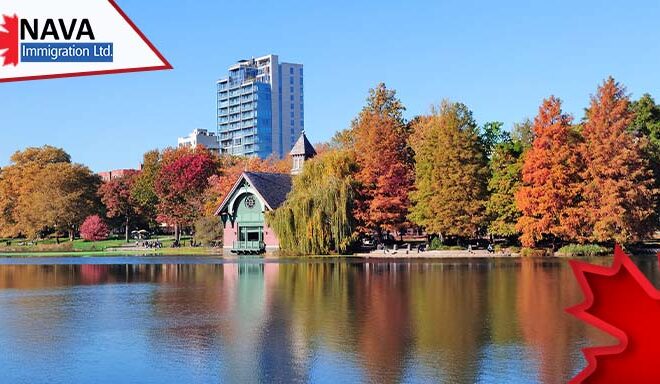Understanding IRCC’s Permanent Residence Application Process
Immigration Refugees and Citizenship Canada (IRCC) handles numerous applications every year. Individuals worldwide submit applications to IRCC for work, study, travel, or settlement purposes. Canada is among the most attractive nations worldwide, and hundreds and thousands of applicants aim to attain Canadian PR to settle permanently. For instance, last year, Canada admitted 471,550 new permanent residents. This was significant because this figure exceeded the country’s 2023 immigration levels target. If you are also seeking to attain Canadian PR, understanding IRCC’s permanent residence application process can help facilitate your journey.
How can you apply for Canadian Permanent Residence?
Before understanding IRCC’s permanent residence application process, let’s outline the process you can use to apply for Canadian PR. This will make it easier to complete the PR application.
Note that the majority of Canada’s PR programs involve a “candidate-applicant” system. These include Provincial Nominee Programs (PNPs), Express Entry programs, and other economic programs.
Interested individuals must first submit their candidate profile to the IRCC under any eligible program (like Express Entry). If they qualify, the IRCC will issue an invitation to apply (ITA) for permanent residence.
After receiving an invitation, candidates need to submit their final application to IRCC. The immigration department then begins processing the application.
Let us help you clarify this with the steps involved in Express Entry-managed programs:
- Step 1: Submit a candidate profile to the Express Entry pool.
- Step 2: Obtain an invitation to apply (ITA).
- Step 3: Submit a PR application in reply to the ITA within the 60-day time period.
Note that certain immigration streams, like family sponsorship, may skip the candidate process. It directly includes the application processing phase.
IRCC’s Permanent Residence Application Process
This section will break down IRCC’s permanent residence application process into various steps to help you understand the process. This process is in accordance with the Auditor General’s report.
Step 1: Obtaining Applicant’s Application
This is the first step in which IRCC accepts applicant’s applications they submitted in response to their ITA. IRCC creates a file in the department’s Global Case Management System (GCMS).
Step 2: Document Verification and Preparation
In the second step, IRCC will check whether the candidate has provided all required documents, such as proof of funds, police certificate, etc.
Moreover, the department produces the documentation for the following steps that will help them assess the applicant’s eligibility.
If any documents are incomplete or missing, the department will return the application.
Note: If an application is found incomplete, only certain PR programs permit applicants to resubmit it. For example, the programs managed under Express Entry, like the Federal Skilled Worker Program, the Canadian Experience Class, & the Federal Skilled Trades Program, do not allow application resubmission.
As per IRCC, this means that the department will reject their applications and refund their fees. Such candidates need to restart the entire process.
Step 3: Assessing Applicant’s Eligibility
After verifying the documents, IRCC evaluates the applicants as per the standards. This is to ensure that the applicant meets all the eligibility requirements and criteria.
If the applicant is found to be ineligible and fails this process, the department will reject the application entirely, and the candidate must start the process again.
Step 4: Assessing Applicant’s Admissibility
In order to be eligible for PR, the applicant must pass the admissibility check. In this step, the IRCC department assesses whether an applicant satisfies the PR admissibility criteria.
To settle in Canada, applicants must complete additional eligibility requirements, such as criminal and security checks.
Moreover, applicants must also complete an immigration medical exam (IME). This will verify that they have no health-related difficulties that would place on Canada’s socialized medical care system.
In case applicants fail a criminal and medical admissibility test, IRCC will reject their application. This will require the applicant to start the entire process again.
Step 5: An Interview (if required)
In this step, if necessary, an application is assessed once more for basic eligibility and admissibility check.
If the IRCC believes an interview is necessary, an applicant is invited to visit an IRCC office to talk with an immigration officer.
As per the IRCC department, the immigration officer may discuss a range of information concerning the PR application. They may verify the applicant’s or their family’s identity or raise any concerns around the application that they may have.
The selection standards for the three Express Entry managed programs are more objective. Thus, interviews are frequently eliminated. Submitting a comprehensive application increases an applicant’s chances of not getting an invitation for an interview.
Step 6: Application Successful
When an applicant passes all the steps, the application will be successful. After this, IRCC will confirm and grant the PR status to the applicant. Now, the individuals are authorized to enter and settle in Canada permanently.
Can I Get More Information On How My Application Is Being Processed?
Applicants to one of IRCC’s immigration programs may request notes on how immigration officers are processing their PR applications. This can happen either before or after getting a decision on the application.
These IRCC notes are called GCMS notes. They are the default records that IRCC keeps during application processing on their system.
These notes include the following information:
- When did the immigration officer open the application;
- Immigration officer code who is processing the application;
- What is the application status at the time of the request? Etc.
So, this was all about IRCC’s Permanent Residence Application Process.
Are you interested in immigrating to Canada but have concerns about the process and pathways? Feel free to connect with our experienced immigration experts for help at NavaImmigration. You can also send us an email at [email protected]





